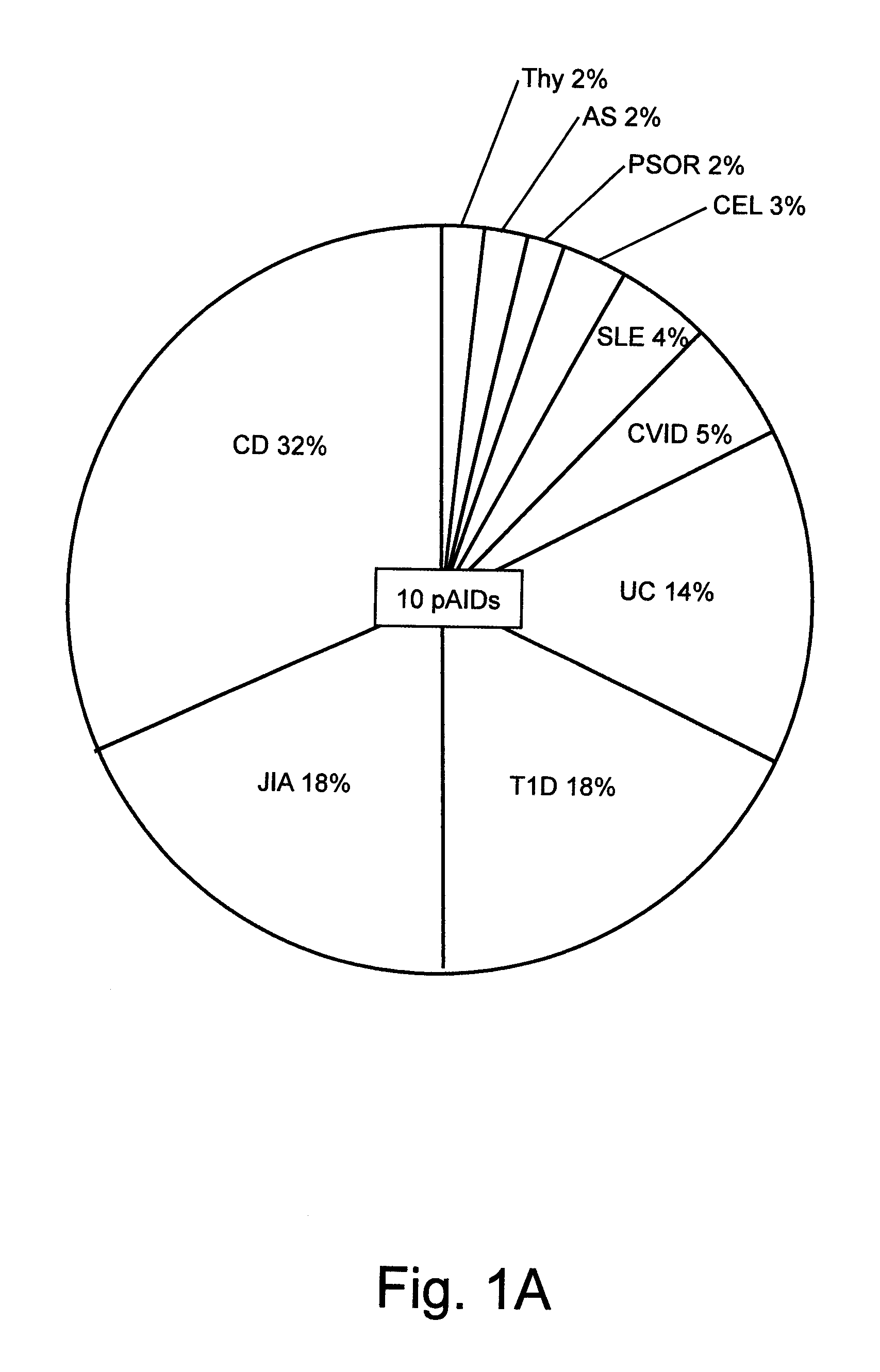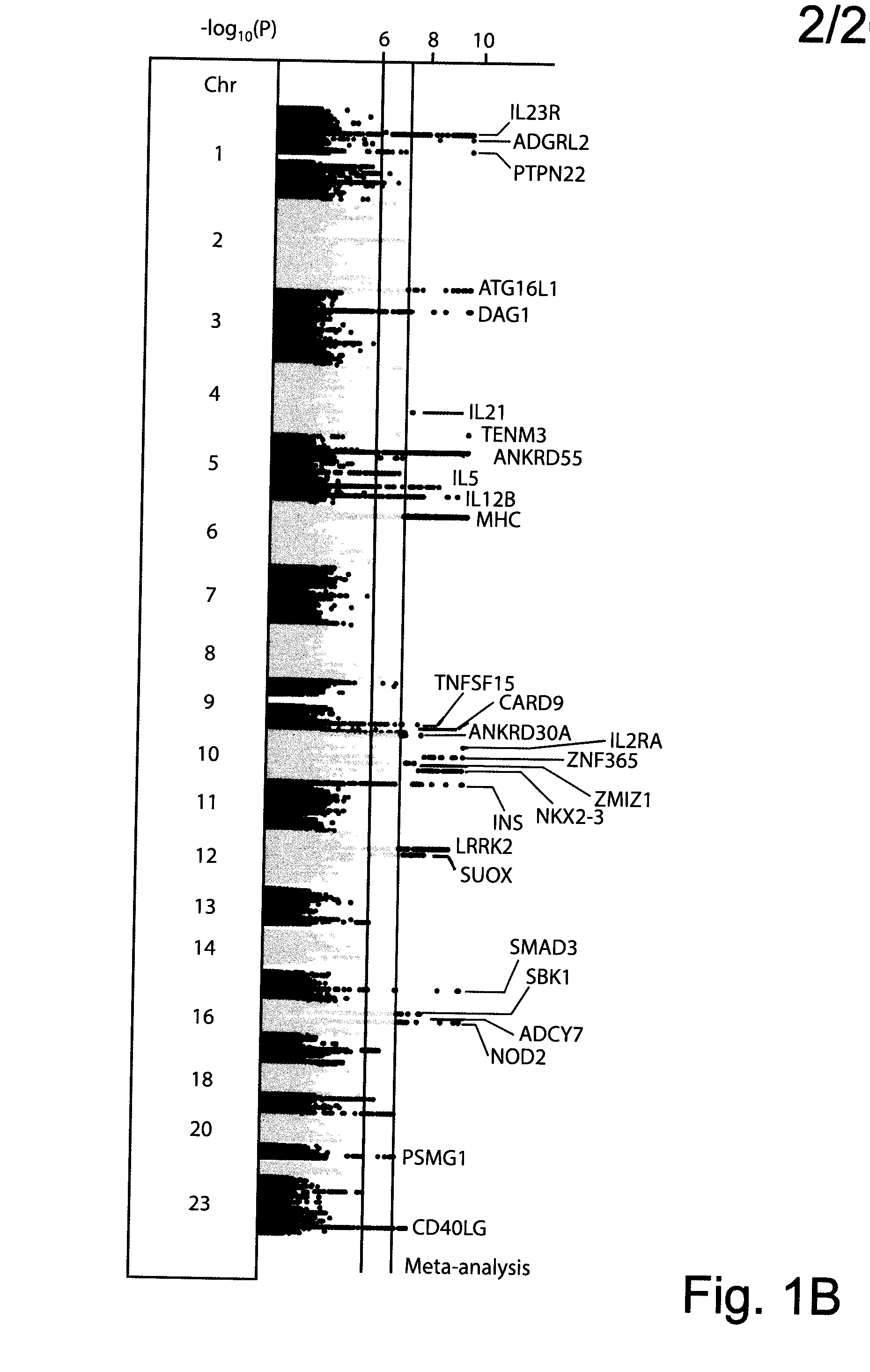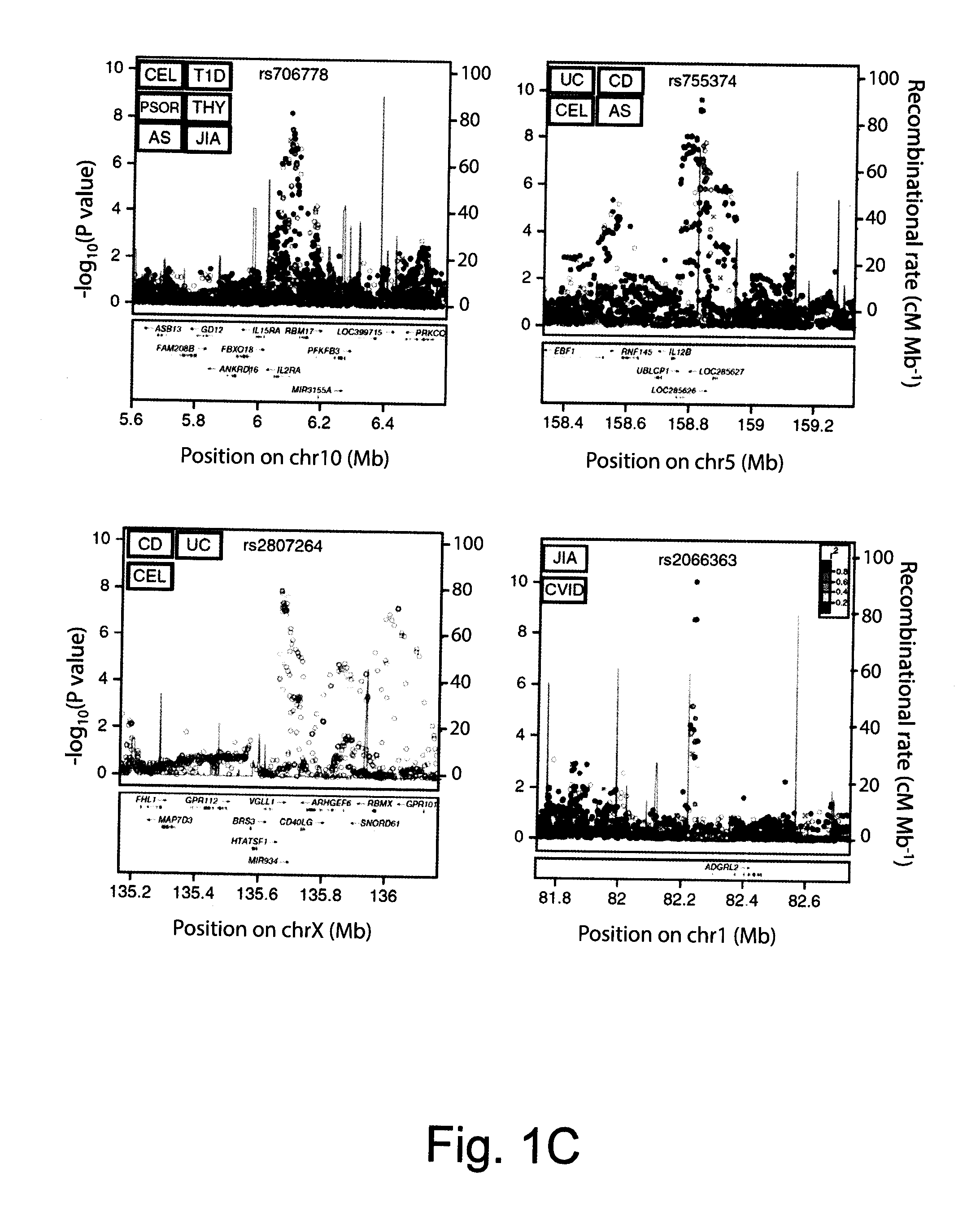Compositions and Methods for Use in Combination for the Treatment and Diagnosis of Autoimmune Diseases
a technology of autoimmune diseases and combination, applied in the field of combination methods for the treatment and diagnosis of autoimmune diseases, can solve the problems of limited power, missed the chance to identify novel associations, and limitations of traditional meta-analysis approaches
- Summary
- Abstract
- Description
- Claims
- Application Information
AI Technical Summary
Benefits of technology
Problems solved by technology
Method used
Image
Examples
example i
REFERENCES FOR EXAMPLE I
[0256]1. Cooper, G. S., Bynum, M. L. & Somers, E. C. Recent insights in the epidemiology of autoimmune diseases: improved prevalence estimates and understanding of clustering of diseases. J. Autoimmun. 33, 197-207 (2009).[0257]2. Cooper, J. D. et al. Seven newly identified loci for autoimmune thyroid disease. Hum. Mol. Genet. 21, 5202-5208 (2012).[0258]3. Tsoi, L. C. et al. Identification of 15 new psoriasis susceptibility loci highlights the role of innate immunity. Nat. Genet. 44, 1341-1348 (2012).[0259]4. Hinks, A. et al. Dense genotyping of immune-related disease regions identifies 14 new susceptibility loci for juvenile idiopathic arthritis. Nat. Genet. 45, 664-669 (2013).[0260]5. Liu, J. Z. et al. Dense fine-mapping study identifies new susceptibility loci for primary biliary cirrhosis. Nat. Genet. 44, 1137-1141(2012).[0261]6. Liu, J. Z. et al. Dense genotyping of immune-related disease regions identifies nine new risk loci for primary sclerosing cholan...
example ii
Screening Assays for Identifying Efficacious Therapeutics for the Treatment of Aids
[0391]The information herein above can be applied clinically to patients for diagnosing an increased susceptibility for developing one or more AID (including pAIDs) and therapeutic intervention. An embodiment of the invention comprises clinical application of the information described herein to a patient. Diagnostic compositions, including microarrays, and methods can be designed to identify the SNPs described herein in nucleic acids from a patient to assess susceptibility for developing AID. This can occur after a patient arrives in the clinic; the patient has blood drawn, and using the diagnostic methods described herein, a clinician can detect a genetic alteration such as a single nucleotide polymorphism as described in Example I. The information obtained from the patient sample, which can optionally be amplified prior to assessment, may be used to diagnose a patient with an increased or decreased ...
example iii
Test and Treat Method for Ameliorating Symptoms Associated with Aid
[0393]In order to treat an individual having AID (including pAID), for example, to alleviate a sign or symptom of the disease, suitable agents targeting the genes disclosed in the tables herein can be administered in combination in order to provide therapeutic benefit to the patient. Such agents should be administered in an effective dose.
[0394]First, a biological sample, or genotyping information would be obtained from a patient. Genetic information gleaned from nucleic acids present in the sample would then be assessed for the presence or absence of the AID SNV / SNP containing nucleic acids associated with onset of one or more AID. The presence of these SNVs indicating the presence of an AID, along with the simultaneous identification of the genes affected, providing the clinician with guidance as to which therapeutic agents are appropriate. The total treatment dose or doses (when two or more targets are to be modul...
PUM
| Property | Measurement | Unit |
|---|---|---|
| effect sizes | aaaaa | aaaaa |
| size | aaaaa | aaaaa |
| restriction fragment length polymorphism | aaaaa | aaaaa |
Abstract
Description
Claims
Application Information
 Login to View More
Login to View More - R&D
- Intellectual Property
- Life Sciences
- Materials
- Tech Scout
- Unparalleled Data Quality
- Higher Quality Content
- 60% Fewer Hallucinations
Browse by: Latest US Patents, China's latest patents, Technical Efficacy Thesaurus, Application Domain, Technology Topic, Popular Technical Reports.
© 2025 PatSnap. All rights reserved.Legal|Privacy policy|Modern Slavery Act Transparency Statement|Sitemap|About US| Contact US: help@patsnap.com



